My focus for this blog is to explore whether we can change homeowners from installing conventional landscapes to installing more environmentally friendly landscapes that provide wildlife habitat and reduce natural resource consumption. I am trying to get away from industrial landscapes that are dominated by carpet-like lawns, trimmed ornamentals, and showy exotics. I am trying to steer homeowners towards structurally diverse yards, with lots of native vegetation from the ground up to the canopy. For the purposes here, I call this an eco-friendly yard.
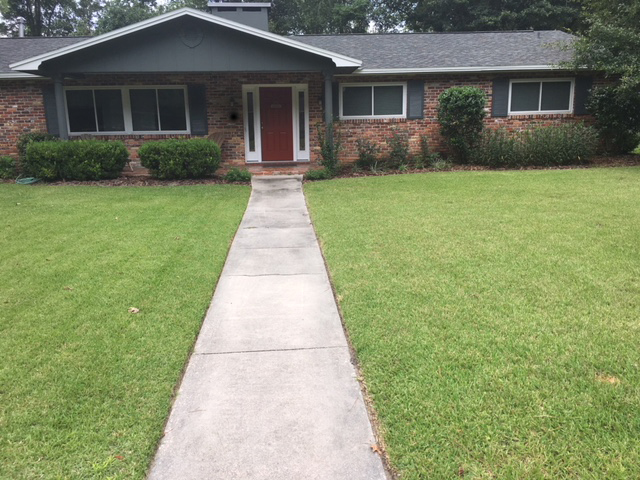
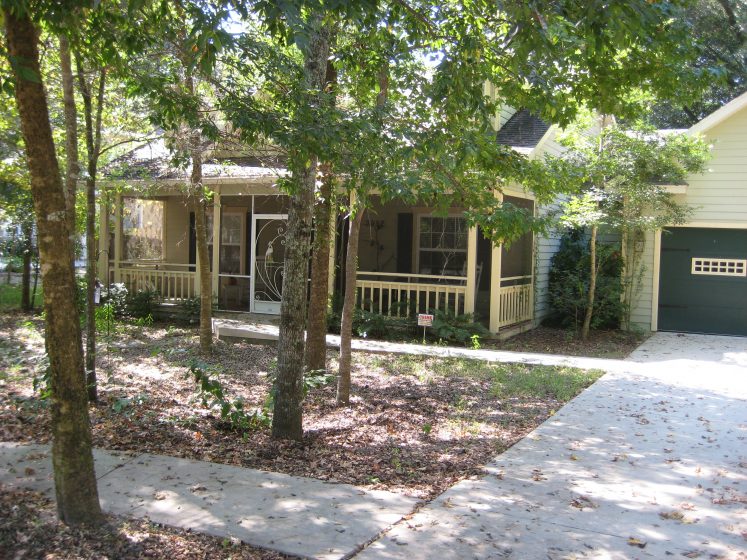
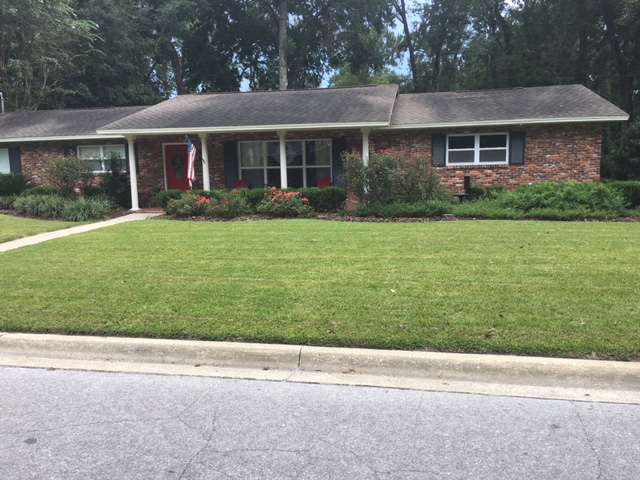
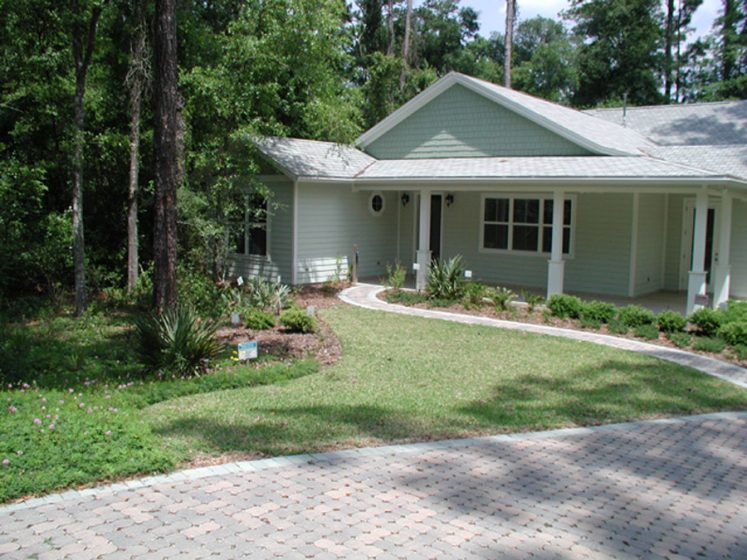
When talking about eco-friendly yards, design professionals, homeowners, and other built environment professionals often say, “Well, it cannot be too messy!” My immediate thought is: What is too messy? Aesthetic preferences are in the eye of the beholder and are shaped by experiences, culture, societal norms, and values. A continuum exists between highly manicured landscapes that contain mainly mowed exotic turfgrass and exotic plants to totally wild yards that contain mainly native plants. Now to me, as an ecologist, I see the beauty of a wild, structurally diverse, native plant yard. Nevertheless, from my experiences, I am the outlier. I understand that we cannot ignore cultural and societal norms because an ecological landscape design may be rejected by most homeowners. Even politics may have a say here as some city ordinances may outlaw non-industrial yards (e.g., everyone must have a mowed lawn). The best-intentioned ecologist may not get anything implemented because of all these challenges.
Enter Cues to Care theory. The term ‘”cues to care” was coined by Joan Nassauer in a paper titled Messy Ecosystems, Orderly Frames (Nassauer, 1995) and is a phrase used to describe actions undertaken by humans that indicate a landscape is well cared for and meets cultural expectations for maintenance. According to this theory, there is a common expectation in societies that landscapes will be looked after, managed, and maintained to acceptable standards. This assumption can be summed up, as Nassauer suggests, with the question “Does it look like they’re taking care of it?” This “cues to care” theory is used in the context of creating eco-friendly yards. If we can figure out how much minimum “cues” are needed to make a landscape acceptable, we can incorporate more native structure into yards. But how many cues are needed? And what types of cues? For example, are one trimmed hedge and 20% mowed lawn the expected ingredients?
Thus, what is needed is research that demonstrates what are the “cues” in a landscape design and how far can front and back yards be pushed down the ecological continuum before a homeowner revolts. When I looked through the literature, it turns out that there are very few studies on this and most (as I will argue below) have not been conducted properly to determine which cues and at what levels are needed to help more eco-friendly yards to be accepted.
From my review of previous studies (mainly conducted by Nassauer and others), they concentrated on a small subset of homes in a given city. In two representative studies by Nassauer (1993) and Visscher et al. (2012), Minneapolis-St. Paul and Detroit homeowners were surveyed to ascertain their landscaping preferences. Essentially, they were shown yards with varying degrees of vegetation structure, from mainly mowed to more “wild”. They were then asked their preferences. The take home message from these studies was that homeowners perceived the more native landscapes as messy and unattractive and some degree of a “cues to care” was required. In fact, in one study (Nassauer, 1993), the author states that in order to garnish homeowner acceptance, “As a general guideline, these mown areas should cover at least half the front yard.”
Several problems are associated with the design and interpretation of these studies, and they contain one or more of the following issues:
- First, it was a nonrandom sample in one study. People were invited to group events and no effort was made to make the study a random sample. We cannot know if the surveyed group is a fair representation of all homeowners in that area of the city.
- Second, there was no attempt to address non-response bias. If the response to the survey was low (as it was in one study), what are the opinions of those that refused the survey? Again, we cannot know if the surveyed group a fair representation all homeowners in that area.
- Third, survey results only reflect the opinions of people in these particular neighborhoods in each particular city. It cannot be extrapolated to represent an average across the U.S. (which is sometimes being done by design professionals).
- Fourth, the sample of homeowners were drawn from neighborhoods with landscapes that had highly manicured lawns; therefore, the subjective norm is biased towards this particular type of landscape. Results may be very different if homeowners were surveyed from neighborhoods that had very little lawn, for example.
I do applaud the idea behind “cues to care”. We need to recognize, measure, and address aesthetic preferences if we are going to incorporate more native plants into yards. Overall, it makes intuitive sense. We have all driven through or lived in neighborhoods and our eyes make assessments of “messy” and “attractive” landscapes. Of course, the acceptability of a landscape in cities is dependent on each persons’ experiences, values, and subjective norms.
The danger of course is that built environment professionals take these results (to date) and apply them to urban landscapes throughout the United States. From my experience, many landscape design professionals (academics and practitioners) refer to these studies as an “average” viewpoint by people across the United States. Practitioners may believe that homeowners would only accept a more ecological landscape design with levels of care that were presented in these studies.
My main point here is that we do not really know the level of cues that are needed when installing eco-friendly landscapes. Therefore, it is important to know which cues to care are needed and in what quantity for ecologically-designed landscapes to be accepted by the public. More research is needed to ascertain homeowner landscape expectations across different neighborhoods, cultures, and cities. I wager that acceptance would vary if respondents grew up near older residential yards with very little mowed lawns versus newer residential neighborhoods that have lots of lawn.
In particular, we do not know how malleable these preferences are. For example, if homeowners were presented with the environmental and economic costs of a manicured yard versus an alternative yard, perhaps they would be more willing to adopt a more eco-friendly yard. In particular, if an entire neighborhood, from the beginning, was designed with very little turfgrass and had lots of native plants, would not the homeowners in these neighborhoods have a different acceptance level? A new subjective norm? I bet so.
Take home message? We cannot rely on research to date and must explore what are the boundaries of landscape preferences. Research should be conducted to determine not only how variable cues to care are from one context to the next, but to better understand how subjective norms could be changed from raising neighborhood awareness and creating working models ecological friendly yards. Such studies would result in more targeted solutions that allow for higher levels of acceptance of and even preference for ecological design in yards.
Ultimately, the goal is to have both attractive and ecologically functioning human-dominated landscapes. Residential landscapes have typically been dominated by ornamentals species and manicured lawns. The challenge of shifting landscape preferences remains but the use of cues to care theory remains a potent and viable possibility for allowing more native plants and structurally diverse structure to be incorporated into yards. Imagine in your mind’s eye, patches of natural landscaping, with complex vertical height structure, that are bordered with landscaping rocks, trimmed hedges, etc. (i.e., cues to care). These bordering features would indicate human intent while simultaneously providing a more chaotic, natural landscape in the yard itself. Perhaps even educational signage is required to raise levels of awareness (see neighborhood signs). Exploring peoples’ preferences when incorporating more natural landscaping needs to be researched and maverick developers/homeowners need to try out new designs. Such studies and local examples will lead to the reduction of environmental impacts and create landscapes that are better for wildlife and human kind alike.
Mark Hostetler
Gainesville
References:
Nassauer, J.I. 1993. Ecological Function and the Perception of Suburban Residential Landscapes, IN P. H. Gobster, (ed.), Managing Urban and High Use Recreation Settings, General Technical Report (St. Paul, MN: USDA Forest Service North Central Forest Exp. Station
Nassauer, J.I.. 1995. Messy Ecosystems, Orderly Frames, Landscape Journal 14/2, 161-170.
Visscher, R.S., J.I. Nassauer and L.L Marshall. 2012. Homeowner Preferences for Wooded Front Yards and Backyards: Implications for Carbon Storage, Landscape and Urban Planning 146, 1-10.

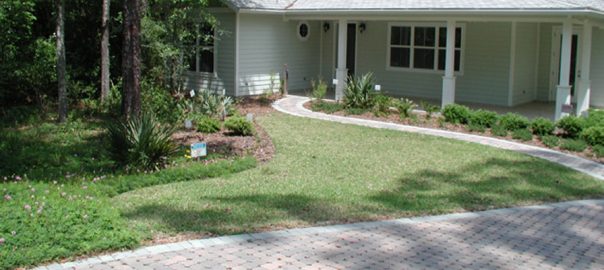







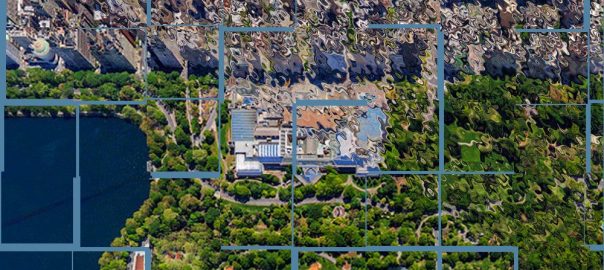
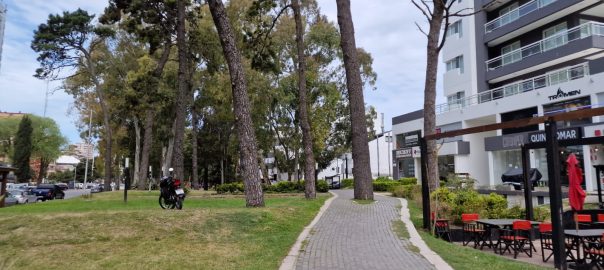

Mark,
Check out the concept of a matrix planting as a strategy to achieve diversity with legibility. Specifically the work of Rainer and West has also been inspirational for me.
Derek
Dear Laura: Very interesting indeed! There is space between ecologists and landscape architects to collaborate. However, research on what is a “cue” is sparse and also misleading. I often here from LAs that mowed lawn is required. This stems from one or two studies by Joan Nassauer and these studies where not only erroneous in terms of methodology but their conclusions. As an ecologist, I have tried to encourage more research in this area of aesthetics and ecology. However, not much traction. It still has not been wellstudied.. the best paper I found is Predicting native plant landscaping preferences in urban areasM. Nils Petersona,∗, Brandi Thurmondb, Melissa Mchalec, Shari Rodrigueza,Howard D. Bondelld, in Sustainable Cities.
I wish more LAs would speak to this. Cheers
Re: “discussions about aesthetics and natural landscaping”
I love what Southeastern Grasslands Initiative is doing for conservation of grasslands, and it is from involvement with them that I heard of your blog. Not only are they (we) organizing for volunteer citizen science support for maintenance of prairie restorations, but there are also current projects that are planting native grasses on the federal highway exits for Clarksville, TN. It is a start. The same concerns about cues to care exist for passing motorists. This fight is well worth all our efforts, because at some point we will turn the corner from “fight” to collaboration. Let’s all work together in our small ways and we will grow together.
You ask if anyone has collaborated with design professionals about the appearance of natural landscaping. I have not, but the Villages has. The Villages, as I’m sure you know, is a huge senior community in Central Florida. It is a highly managed, established development that has its own chapter of the Florida Native Plant Society. A group of landscapers from the University of Florida, lead by Dr. Gail Hansen, designed several landscape templates full of native plants for the homeowners of this large development, and apparently many have followed through with them – with the blessing of the community association! It is a single location with a narrow demographic, but there could be some good data there.
For new housing developments, however, you might consider focusing your research on Millennials. The younger generations tend to be more malleable and open to new ideas. They also will be the majority of future homeowners. In addition, the current twenty- and thirty-somethings seem to be more environmentally conscious, so they should welcome the opportunity to save the planet via their yards. As Leslie B suggested, framing the message is important. Millennials likely identify with trendy terms such as “eco-friendly”, “chemical-free”, “low impact”, and “water-wise”. Many of them might want to live in a cutting-edge neighborhood that is lawn mower-free!
I applaud your efforts to cure us of our lawn-scape addiction.
Lilian: yes I do think presenting and marketing alternative landscapes in the mainstream could help shift the needle a bit. However, I do think several maverick developers and homeowners, that create an eco-friendly landscape , can go a long way in shifting local perceptions. We need to find these Mavericks and support efforts to engage with these Mavericks. Perhaps, for example, we can offer property tax breaks for homeowners that get rid of turf grass.
I am a member of a landscape committee for a large condo complex (over 100 acres). Our committee has expressed the desire to incorporate Florida Friendly gardening practices but we are well aware that most condo owners like lawns and no leaves. Nearby, there is an HOA that started out as Florida friendly, lots of live oak trees and not much lawn in the common spaces. I am hoping we can find a landscaper who will work with us to demonstrate areas that will be attractive to the owners. It would be so great to have examples of design that we could use. I also like the idea of ‘selling’ it as bird and butterfly sanctuaries.
What would happen if articles and photographs of eco-wildlife friendly yards and gardens were published in mass-market magazines? “Better Homes and Gardens,””Martha Stewart living” etc? that would surely go a long way toward re-educating the public about the advantages of a fresh approach to landscaping for the average homeowner. Cues to care is an easy concept to understand and with our collective heightened interest in all things environmental, surely this would be an easy sell. If we can reduce smoking,eat more organically, and recycle, then surely we can re-think the earth surrounding our homes!
Yes Carol, this is a great hole continuum of choices and preferences. I guess the hope of s to move the needle more to the “native” side. Inertia and subjective norms are huge and channel people into a limited range of options. Those “Mavericks “ in each neighborhood and town are critical to show people alternative landscapes. Encouraging people that take a more “edgy “ approach helps demonstrate to others alternative approaches. Thanks for your comment
Interesting read. I believe more homeowners will consider including more ecologically natural areas in their landscape if they know about this being an option, they are given lots of examples (so they can make selections that appeal to their own personal tastes), and if these options are fairly low-maintenance.
First of all, people need to be informed that including natural areas in their landscape is an option. Typically, people work with landscapers (not landscape architects) and landscapers do what they know – – which is to use plants they are familiar with and have always used. It’s hard to find someone who is a landscape architect who is also knowledgeable about Florida Friendly Landscaping and who also is knowledgeable about incorporating native plants. There should be a website that lists landscapers, landscape designers, and landscape architects (by county) with links to individual profiles which include their philosophies, their credentials, and their portfolios – – with lots of examples of their work.
In addition, there should be a database with lots of examples of natural landscaping elements so people can find elements that appeal to them. If there are many examples, people can pick and choose elements and work them into their landscape. For example, they could have some lawn and some natural areas, or create an entirely natural landscape by piecing together natural elements from the examples they find in the database. By having many examples, homeowners can also inform their landscape professional what is acceptable to them and what is not acceptable (too messy looking). Further, the message shouldn’t be that people can no longer use ornamental plants, or that they must only use native plants. All of these should remain options for creating a yard that is more Florida Friendly, and these elements can be combined to create landscaping that is both appealing (according to individual taste) and more ecological.
People also need options that are fairly low-maintenance. It’s far easier (and less expensive) to run a mower over a lawn than to spend hours weeding – – or paying someone to weed! As the blog article notes, “cues to care” are essential. Most people want their landscape to look neat and cared for, not messy looking, even if it designed to be natural. There should be assessable information that informs people how to easily maintain natural areas so that they don’t look weedy or overgrown.
I love the ways of what is called food forest. you start by going out in the rain & looking at the water standing & flowing in your yard . Then you make a plan of your findings . Digging swells to contain the water in the place best found. fill swells with logs , yard waste and cuttings . Top off with mulch . If you can get top soil put it in before the mulch.
plating plants on the top of the swell that like it a bit dryer & plants in the swell that like it wet . now look for plant guilds that are beneficial to you and the wild life .
My wife loves plants, however, when we went looking for a new house in a new town because of a new job, she turned down the houses that had no lawn and those with only lawn. She was looking for a good mix of both ornamental plants (native or non it didn’t matter, she wanted some color). I do education for home gardeners. I stress organic practices and the use of native plants, but if I only talked about either of those two, I would loose most of my audience. No, this isn’t from a scientific study it’s from asking those who attend my classes. Change takes time. We should be happy with the little victories and keep plugging
I would love to see developers marketing a wildlife-friendly, sustainable yard. Anybody know of a specific example?
Jen, great that your city is trying something different. Leslie- absolutely marketing and language is important. Would be interesting to see if preference changes with different wording!
the discussion also has to be about “framing” the messy, native yards- using the terms “pollinator-friendly” or “butterfly garden” would be likelier to resonate with homeowners vs. “native plants.” So, I would think a lot of this is in marketing too, when talking about preferences with homeowners… selling the point that there is little mowing, or “low-maintenance” yard also sells the platform. I wonder if those terms should also be used in the surveys too and it should be compared to see what a homeowners’ reactions are to a picture when framed by “butterfly garden” vs. no description?
Interesting. Yesterday, I met with our city’s Parks and Recreation Committee to discuss improvements to one of our parks (we live in a rural, small western town). The committee voted to start implementing recommendations of a “Permaculture Design” for the park, which will include native and edible landscaping. This park is widely used but is infested with noxious weeds, litter, and occasional vandalism (mainly from suspected bored youth). We are hoping that by improving the public space and using more natural landscape features, we can build community resilience, lower crime, and invite more users to the park who want to care for and enjoy the park.
Anybody else have collaborated with design professionals and had “interesting” discussions about aesthetics and natural landscaping?